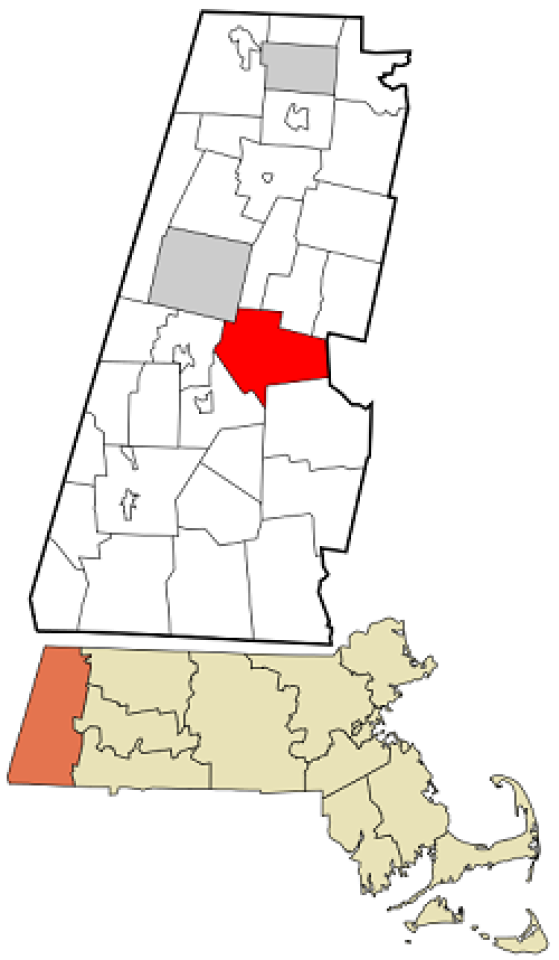
Fast, affordable Internet access for all.

Last week we wrote about the partnership between Long Prairie, Minnesota and the forward-thinking and locally minded local telephone cooperative CTC to build a citywide fiber network and bring affordable, high-speed Internet to everyone in town.
Long Prairie isn’t alone, however, among north-central Minnesota communities needing better options, and for at least two others CTC has become a natural partner. This is both because of its location - offering service across the region in Sullivan Lake, Randall, Pillager, Outing, Nokay Lake, Nisswa, Motley, Mission, Lincoln, Leader, Freedhem, Ely, Brainerd, Baxter, and Crosby - and because it has become one of the most aggressive fiber builders in the state.
Two other cities, specifically, Ely and Little Falls, have also partnered with CTC to bring fiber loops to their business districts. Both communities have faced challenges when it came to building and connecting their residents and businesses to a fiber network.
Dealt a Poor Hand, Ely Forged Ahead
The City of Ely sits on the Southern side of Shagawa Lake with a population of 3,500. While iron used to be what drove the economy, today Ely is a tourist destination and is known as the entry point for the Boundary Waters.

Snapshot
Florida Legislature rewrites utility pole bill to include language backed by municipal electric utilities
North Carolina’s County Broadband Authority Act includes clause drawing criticism from electric co-ops
Oklahoma Governor signs mapping bill, vetoes measure adding Tribal representation to state broadband council
The State Scene
Florida
A Florida bill, which included provisions that would have forced Florida’s municipal electric utilities and their ratepayers to pay private Internet Service Providers’ utility pole make-ready costs, was significantly revised before passing the State House by a unanimous vote of 115-0 on April 28.
H.B. 1239, which no longer includes the make-ready costs provisions, initially read like a regulatory wishlist for incumbent cable monopolies until it was redrafted to become a legislative package aimed at improving broadband deployment across the state. The revised bill now heads to the State Gov. Ron DeSantis for approval.
The final version of the bill establishes additional duties for Florida’s Office of Broadband, creates a state broadband grant program, and requires the Office to conduct mapping of unserved and underserved areas of the state -- a significant deviation from the version that was first introduced in February.
Tired of waiting for connectivity solutions to come to town, one Minnesota community has instead partnered with a local telephone cooperative to build a fiber network reaching every home and business in the city.
In embarking on its journey to improve local Internet access six years ago, Long Prairie (pop. 3,300) ended up partnering with one of the most aggressive fiber network builders in the state - Consolidated Telephone Company (CTC) - on a solution that meets local needs. The two finished a ubiquitous Fiber-to-the-Home build in 2018, with CTC now owning and operating the network.
Looking for Solutions
The City of Long Prairie (pop. 3,300), the county seat in Todd County, Minnesota, has long struggled with connectivity. It has manifested in issues with connecting students from their homes, with losing parts of the local workforce, and in a lack of access to support larger healthcare institutions for their aging population.
In 2014, the city met with state officials as well as broadband providers to discuss the results of a feasibility study that was done back in 2011. Todd County stressed that this was a pressing issue that couldn’t wait anymore - they needed state support with funding and potentially help setting up a partnership with a local co-op. But this kind of partnership couldn’t just be with any co-op, it had to be a mutually beneficial partnership that could connect all of Long Prairie’s businesses and residents. It would take 2 more years before the community entered into an agreement with the right one.
CTC started in the 1950s as a telephone cooperative, and began offering Internet access via DSL service in the late 1990s and early 2000s. Around 2008, CTC’s Board of Directors decided that the best long-term strategy for providing strong, reliable connectivity would be to build out Fiber-to-the-Premise (FTTP) for all of its members.
Building on that initial network, the main vision and mission driving the co-op over the last 10 years has been getting as many people in the area fast and reliable connectivity as possible. But because CTC is just one firm, that has meant developing relationships with other towns, cities, and counties that bloom into successful partnerships.
Snapshot
Nebraska Senate rejects amendment supporting municipal broadband in spending plan
Michigan Governor vetoes bill granting private ISPs property tax exemptions
Montana, Iowa and Maine channel Rescue Plan funds towards new broadband grant initiatives
The State Scene
Nebraska
The Nebraska Senate approved a plan to spend $40 million over the next two years on expanding rural access to high-speed Internet by a unanimous vote on Tuesday, but only after an amendment to L.B. 388 that would have allowed municipalities to offer retail broadband services was rejected.
State Sen. Justin Wayne introduced the amendment, saying that “broadband should be considered a critical infrastructure need and that private telecommunications companies have not stepped up to serve the whole state,” the Lincoln Journal Star reports.
Wayne urged Nebraska Senators “to look to Nebraska's history of public power as a model, as well as to the example of other states that are allowing cities to offer broadband.” The amendment ultimately failed by a vote of 20-24. Wayne assured fellow Senators that he will reintroduce the amendment in the future.
The bill marked the first time the Nebraska Legislature has suggested using state tax dollars to fund broadband deployment. As it was submitted to Gov. Pete Ricketts for his signature, the bill would annually allocate, until funds run out, $20 million in grants to projects that increase access to high-speed broadband in unserved regions of Nebraska. It would prioritize projects in regions which lack access to Internet service with speeds of at least 25 Megabits per second (Mbps) download/3 Mbps upload. Grant recipients would be required to deploy networks capable of providing service of at least 100/100 Mbps within 18 months.
Michigan
As the oldest son of the legendary folk singer Woody Guthrie, Arlo Guthrie — the Town of Washington, Massachusetts’ most famous resident — built a name for himself as a singer-songwriter by letting folks know, “You can get anything you want at Alice's Restaurant.”
But if you ask the town’s Broadband Manager Kent Lew, there was one thing that was not on the menu in Washington before last year: high-speed Internet connectivity.
That’s no longer the case as the small town of Washington (pop. 549) has been on the vanguard of rural communities in the hill towns of the Berkshires that have built out (or are in the process of building out) Fiber-to-the-Home (FTTH) networks to bring gigabit speeds and affordable connectivity for residents for decades into the future.
The Pandemic: Curse & Blessing

“On the eve the Governor announced the (pandemic) shut down in March of 2020, our first Fiber Service Area was ready,” Lew recalled in a recent interview with us. “It was tremendous that we were able to do this just as people really needed it.”
As one of dozens of Western Massachusetts towns working in partnership with municipal utility provider Westfield Gas + Electric (which operates Whip City Fiber) to build broadband infrastructure, it was in 2015 that Town Meeting voters authorized a $770,000 bond issuance to finance half the construction costs of the $1.47 million network. The other half came from state grant funding.
On Episode 10 of Connect This!, hosts Christopher Mitchell and Travis Carter (USI Fiber) were joined by Joanne Hovis (President, CTC Energy and Technology) and Doug Dawson (President, CCG Consulting) to talk about how communities can prepare for the unprecedented money poised to flow from the federal government for Internet infrastructure.
The panel first gives an update on the upcoming Emergency Broadband Benefit and how cities and small ISPs can plan for a successful deployment. They then discuss the upcoming infrastructure funding, including what to consider when putting together a plan, how to use the funds effectively, balancing the needs of today with a long-term plan, and how to avoid getting taken advantage of by bad actors.
Resources mentioned during the show include the Blandin Foundation in Minnesota and the Michigan Moonshot Initiative.
Subscribe to the show using this feed, or visit ConnectThisShow.com
Email us broadband@muninetworks.org with feedback and ideas for the show.
Watch the show here, or below.
Join us for Episode 10 of Connect This!, where hosts Christopher Mitchell and Travis Carter (USI Fiber) will be joined by Joanne Hovis (President, CTC Energy and Technology) and Doug Dawson (President, CCG Consulting) to talk about how communities can prepare for the unprecedented money poised to flow from the federal government for Internet infrastructure.
The panel will dig into what to consider when putting together a plan, how to use the funds effectively, and how to avoid getting taken advantage of by bad actors.
The show will begin on Thursday, April 29th at 5pm ET/4pm CT via this link, or watch below.
Subscribe to the show using this feed.
Email us broadband@muninetworks.org with feedback and ideas for the show.
Every week we write about the municipalities and the cooperatives that come together to bring high-quality, affordable, locally accountable Internet access to those who need it most. And it seems as if we're at a watershed moment as a nation: community solutions to broadband are poised to have their big day.
One of the big questions that remains is who Congress and the White House will listen to in the coming weeks and months as national legislation moves through the D.C. crucible: their constituents, many of whom have spent the past year struggling to work and live on too-expensive, too-slow, or nonexistent broadband connections forged by a broken marketplace, or the monopoly ISPs gearing up for the fight of their lives to snuff out even the specter of competition so they can continue to extract profits from cities and towns large and small across the country.
ILSR's Sean Gonsalves and Christopher Mitchell have an essay out in The American Prospect which outlines both the upcoming fight and the future at stake, as the Biden Administration's American Jobs Plan positions itself to return a level of parity to local solutions in expanding broadband access and promote competition.
Read an excerpt below, but check out the whole piece here:
28 million households have only one Internet service provider offering at least the minimum broadband speed. Many of the supposed competitors are phantoms. And the number of households in areas with more than one ISP offering gigabit speed service is paltry. Only two million households have that choice, or maybe many fewer—the FCC doesn’t really know at any granular level.
Today, Internet access has been largely monopolized by a few big cable companies, even as voice and television services have become more competitive. Government officials have generally responded by seeking to remove barriers to competition, rather than embracing more deliberate pro-competition policies to better shape the markets. But that may be coming to an end.
Snapshot
Maryland plans to funnel American Rescue Plan Act funding towards community broadband
Vermont Governor bolsters House plan backing Communications Union Districts
A national movement to address digital inclusion ignites
See the bottom of this post for related job openings
State Scene
Maryland
Maryland State Governor Larry Hogan made digital equity and literacy a top priority of the state when he signed H.B. 97, the Digital Connectivity Act, into law on April 13. The new law establishes the Office of Statewide Broadband (OSB) within the Maryland Department of Housing and Community Development to create a plan to get all Marylanders connected to affordable, high-speed Internet by 2026. The OSB will also assist in administering $300 million for digital equity initiatives out of the $3.9 billion Maryland received in American Rescue Plan funds.
The $300 million allocation will be broken down into separate pots of money to address physical infrastructure, affordability, and adoption: $45 million will be for grants that support and expand municipal broadband networks; $75 million for affordability initiatives to subsidize the cost of monthly service fees and devices for eligible residents who are subscribers to private Internet Service Providers (ISPs); and $150 million dedicated to deploy broadband infrastructure and expand connectivity in both urban and rural areas. In addition, $10 million is earmarked for local government and community-based solutions, and $6 million will support adoption initiatives, including $4 million for a new division under the University System of Maryland to develop curriculum on digital literacy and addressing the broadband gap.
When he was a colonel in the Virginia Militia, George Washington is said to have visited “Craig’s Camp,” a mountainous frontier outpost in southwest Virginia near the border of what would later become West Virginia. After the Seven Years' War, farmers and tradesmen were drawn to the area, establishing a settlement known then as “Newfincastle.” Over the years, the “fin” was dropped and the town became New Castle, the seat of Craig County.
Today – with the Jefferson National Forest comprising half of the county, its scenic byways, access to the Appalachian Trail, old churches, and family cemeteries – Craig County and the surrounding region remains steeped in early American history. And now, thanks to the Craig-Botetourt Rural Electric Cooperative (CBEC), this corner of rural Virginia has established a forward-looking outpost of Internet connectivity, and a new fiber frontier that planners hope to expand across the seven counties that make up CBEC’s 650 square-mile service area.
The Bee Online Advantage

It was in 2018 when CBEC began to seriously consider building a broadband network to serve its 6,800 members because, as the co-op’s website puts it: “Our members are experiencing what originally created the electric cooperative in 1936 – a lack of service. They lacked electricity [85] years ago; now they lack high-speed Internet [access].”
That lack of high-speed Internet connectivity is becoming a thing of the past, at least for co-op members in Botetourt County who now have access to an emerging Fiber-to-the-Home (FTTH) service through a CBEC subsidiary known as the Bee Online Advantage.